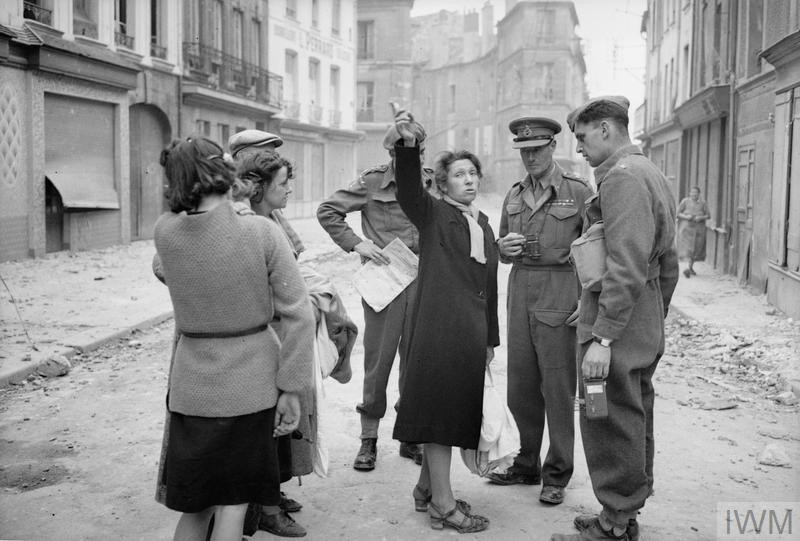For four weeks, the British soldiers had been held back by the German forces that occupied the village and defensive positions all to the north of the city.
Following an intense pre-bombardment on the evening of 7 July 1944, the men would then begin to advance towards the city from 04:20 on 8 July. The men of the British 3rd Infantry Division needed to advance beyond the German defences in the Epron and Lebisey area. They would then enter the city on 9 July.
On the night of 7 July, recorded in the British war diaries, the pre-bombardment was recorded as a grand show and morale booster for the men. They had been static for weeks and this sight meant they would soon be advancing. Little would then know of what was unfolding on the ground in Caen.
The bombing had overshot the target area, causing the destruction of hundreds of buildings and killing many of the civilian population. The infantry that began to enter the city encountered two problems. The first was the amount of rubble from destroyed and damaged buildings that made the road impassable to vehicles. Secondly, the residents of Caen, now homeless, moved to the north of the city into the rear army lines. These displaced people, or refugees as the war diaries referred to them, now needed to be cared for.
By the end of 9 July, the British had reached the centre and, on 10 July, occupied the northern bank of the Orne River, which was the objective. Both the 1st Kings Own Scottish Borderers and 2nd Kings Shropshire Light Infantry held this line looking out over the southern half of the city.
Operation Charnwood was extensively photographed and videoed by the Army Film and Photography Unit. A collection of photographs was captured of the men in Rue des Chanoines and Rue Montoir Poissonnerie. Some of these photographs were staged, such as the anti-tank gun pointing back up the hill towards Abbaye aux Dames de Caen. Some of the buildings in the photographs remain today, whilst some were badly damaged and demolished.
Looking toward Eglise Saint-Pierre de Caen, another photograph from 9 July shows soldiers in the street and a Sherman tank parked up. The bomb damage to the church is clearly visible. The view is different today due to the new buildings that were built post-war in the rebuilding of Caen.
